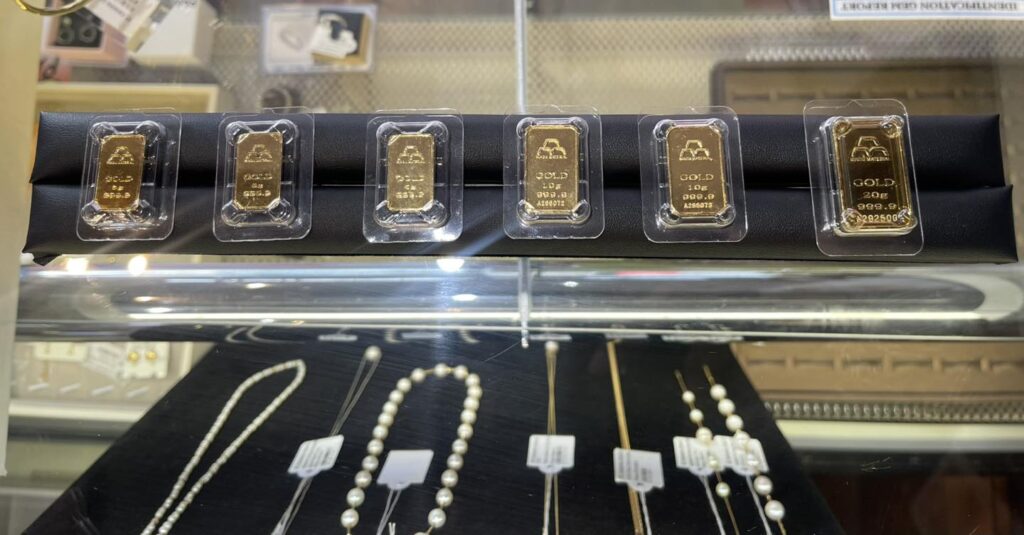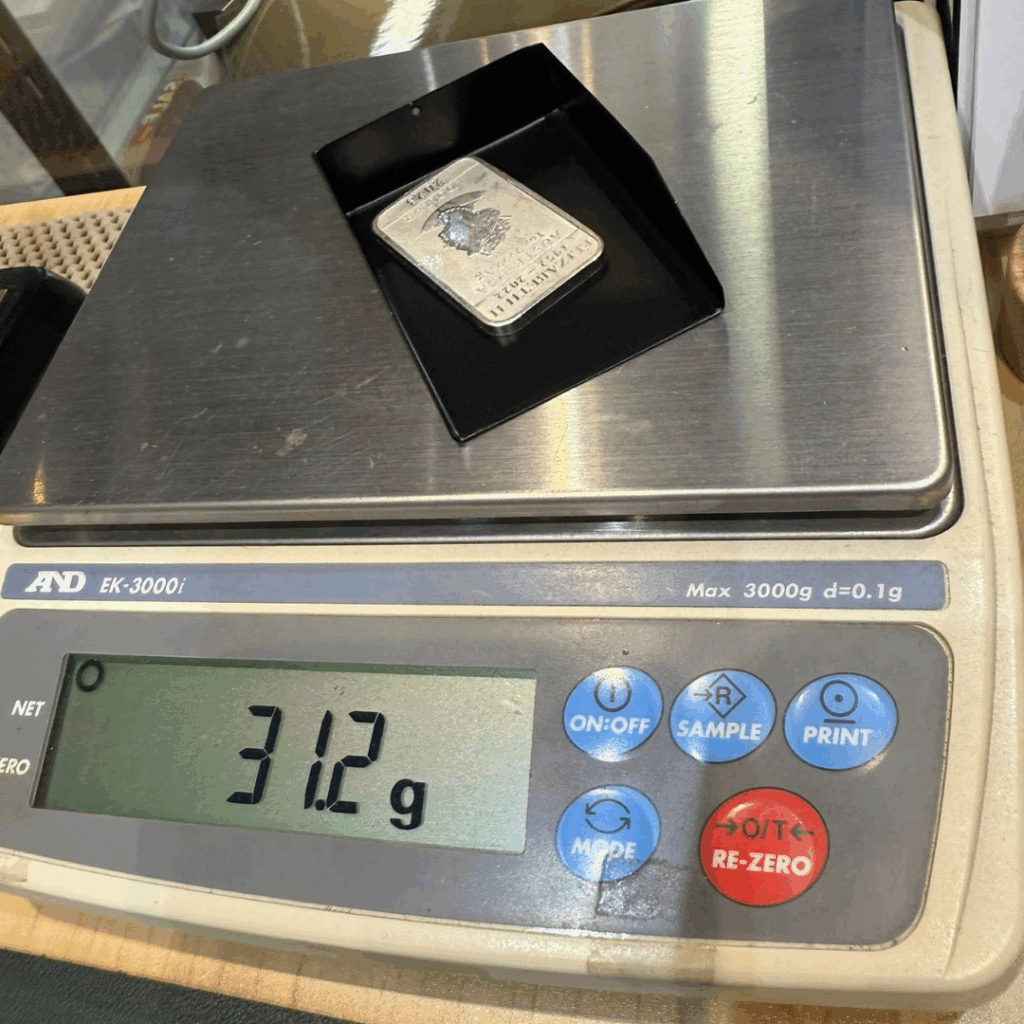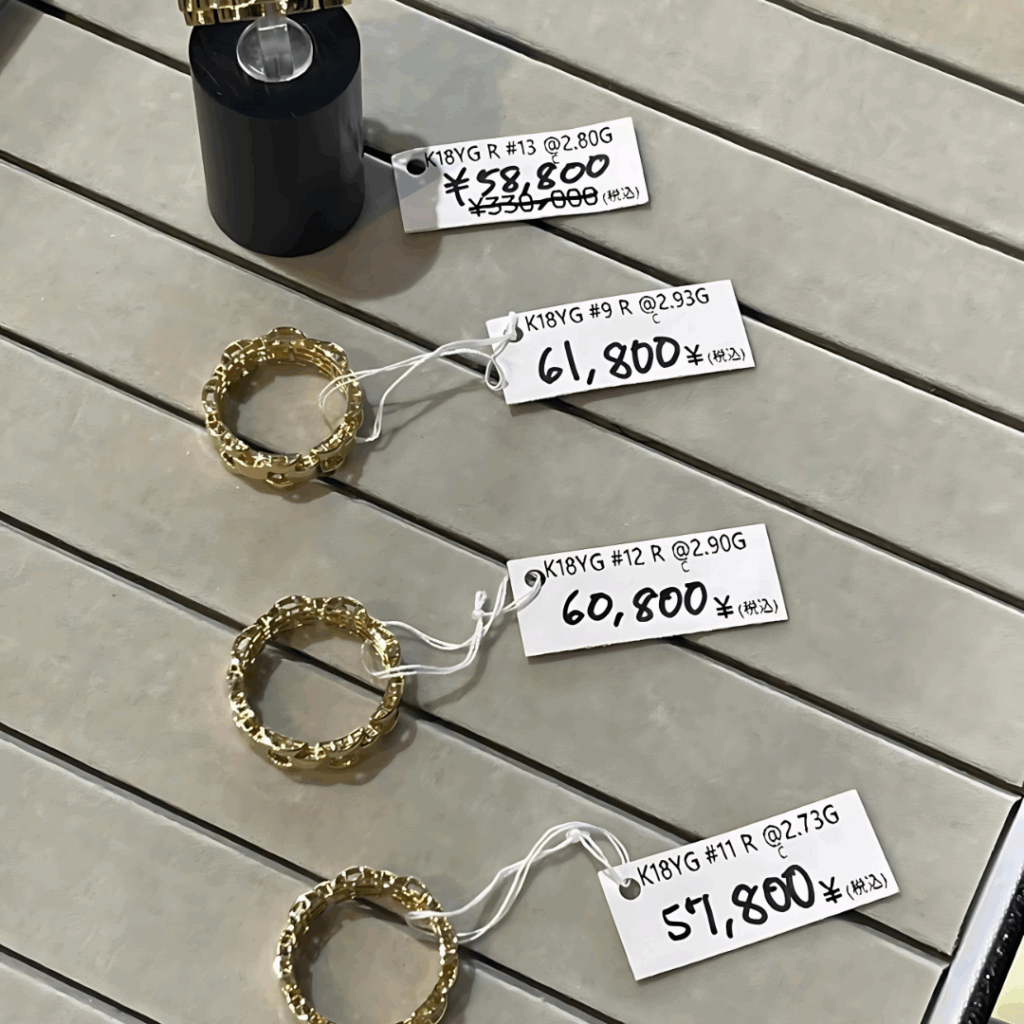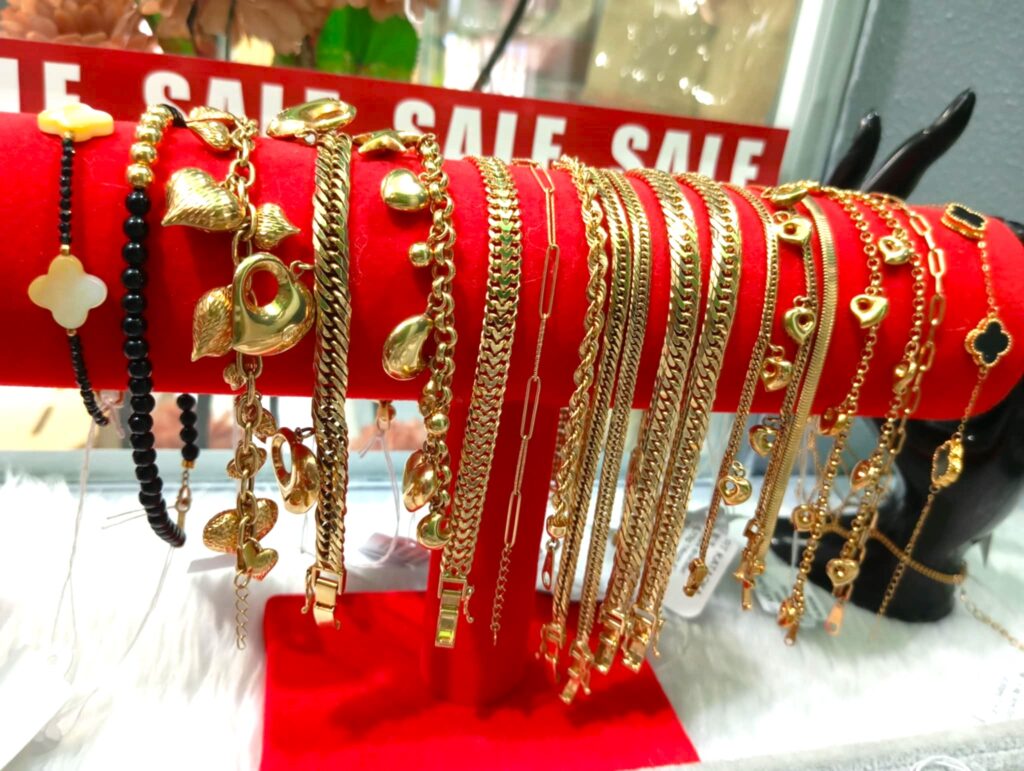
Whether you’re celebrating a milestone, making a smart investment, or simply treating yourself, buying gold is a rewarding experience. But with terms like “karat,” “troy ounce,” and “spot price,” it can sometimes feel a little overwhelming.
At RT Kataoka, we believe that understanding the basics of gold is the first step to making a confident and satisfying purchase. This simple guide will walk you through the key factors that determine a gold item’s purity, weight, and ultimately, its value.

1. Purity: Understanding Karats (K)
Gold purity is measured in karats, represented by the symbol “K.” The karat system is a 24-point scale that tells you the percentage of pure gold in a piece of jewelry. The remaining portion is made up of other metals, or “alloys,” which are added to increase the gold’s strength and durability.
K24 Gold: With its incredibly rich, vibrant yellow hue, K24 gold is also the softest and most pliable form of gold. While it’s highly valued for investment and traditional ceremonial pieces, it’s generally too soft for daily wear jewelry.
K22 Gold: K22 Gold is 91.7% pure gold, with the remaining 8.3% being other metals, or alloys. It offers a beautiful balance between high purity and enhanced durability, making it a popular choice for intricate jewelry, especially in Asian and Middle Eastern cultures.
K18 Gold: Comprising 75% pure gold, K18 is the “sweet spot” for many. The rich color, hypoallergenic nature, and increased durability make it an ideal choice for high-end, everyday jewelry.
K14 Gold: K14 gold is composed of 58.3% pure gold, with a mix of 14 parts gold and 10 parts alloy. It’s the most popular choice for everyday jewelry and engagement rings due to its excellent balance of durability, affordability, and beautiful color.
At RT Kataoka, we specialize in high-purity Japanese gold, including exquisite K24 and K18 pieces, known for their superior quality and craftsmanship.

2. Weight: The Two Key Measurements
When it comes to gold, weight is a critical factor in determining its value. You’ll encounter two primary units of measurement:
Grams (g): This is the most common unit for weighing gold jewelry in our local market. It’s a straightforward and familiar metric.
Troy Ounces (oz t): This is the international standard for weighing precious metals like gold and is used to quote the global “spot price.” One troy ounce is slightly heavier than a standard ounce, weighing approximately 31.103 grams.
When you see a price per gram for jewelry, it’s based on the item’s karatage and the current market value of pure gold.

3. Value: The Formula for Fair Pricing
The price you pay for gold jewelry is a combination of three main components:
The Spot Price: This is the live, fluctuating market price of one troy ounce of K24 pure gold.
The Purity & Weight: The value of the gold itself is calculated by multiplying the item’s weight by its purity percentage (e.g., 75% for K18) and then by the current spot price.
The Manufacturing & Design Fee (Patahian): This is the cost of the artistry and labor involved in crafting the jewelry. This fee can vary greatly depending on the complexity of the design, the reputation of the craftsman, and the brand.
Our Commitment to You: At RT Kataoka, we pride ourselves on transparency. When you shop with us, you can trust that our prices are fair and based on these fundamental principles. We’re happy to explain the breakdown of any piece, ensuring you understand exactly what you’re buying.
Thinking of selling your old gold? We use this very same process to give you the highest and most accurate valuation for your items. Bring them in for a professional, no-obligation assessment.

Ready to find your perfect piece? Browse our stunning collection of Japanese gold jewelry today, or contact us to learn more about our gold buying services. We’re here to help you make an informed choice you’ll treasure for years to come.